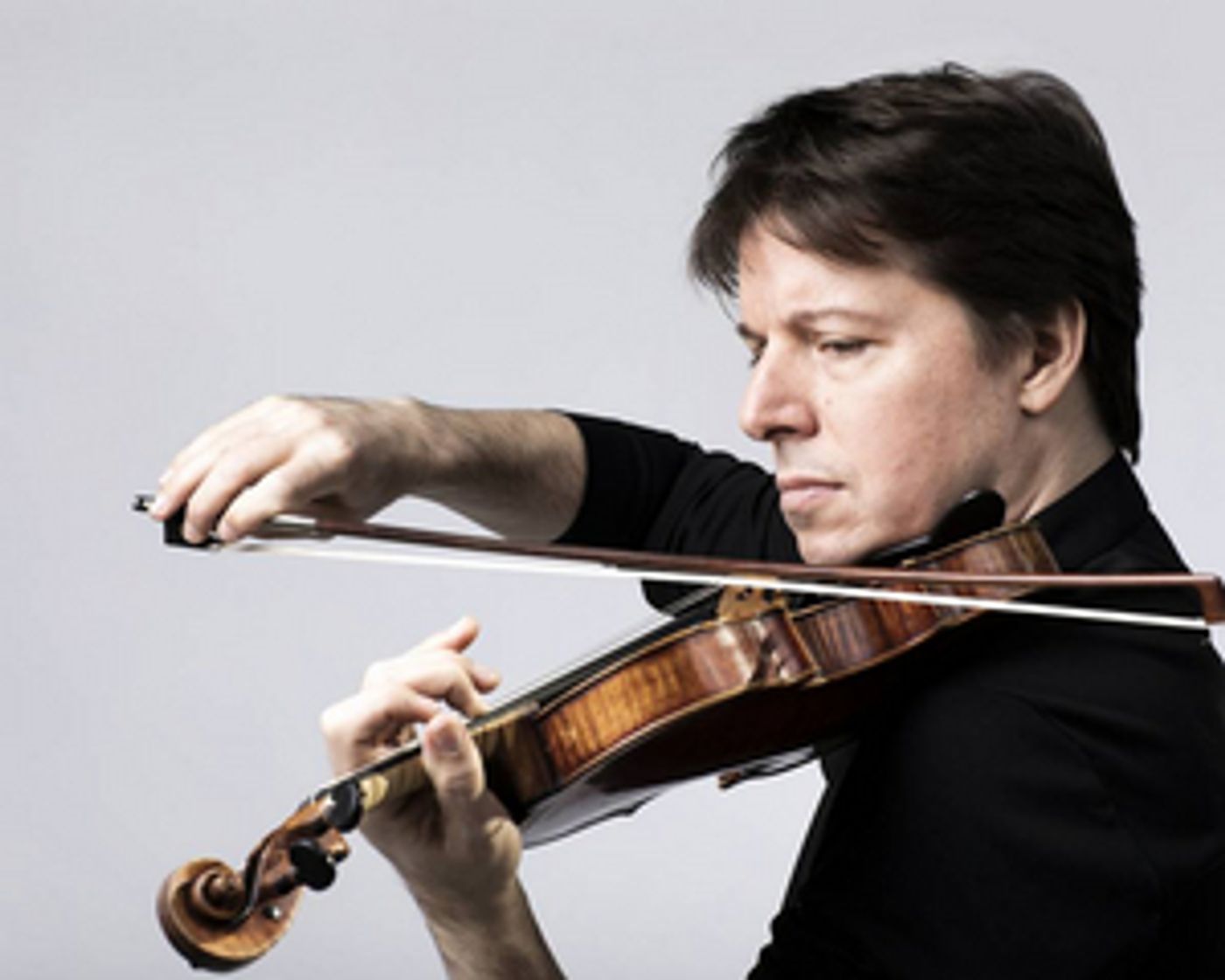Review: THE LA JOLLA MUSIC SOCIETY PRESENTS JOSHUA BELL AND THE ACADEMY OF SAINT MARTIN IN THE FIELDS at San Diego Civic Center
Bell Excels in Bach, Barber and Beethoven

When he was four-years old Joshua Bell's parents found him making music by plucking rubber bands stretched to different lengths on dresser drawers. Clearly, he needed a real instrument. Fortunately, they bought a violin rather than a guitar. Ten years later he was the youngest ever to solo with the Philadelphia Orchestra, and went on to become one of the most successful violinists in the world. The "Gibson" Stradivarius has replaced dresser and rubber bands.
In his most recent San Diego appearance Bell stood as soloist while conducting the acclaimed Academy of St. Martin in the Fields chamber orchestra in concertos by Bach and Samuel Barber. After intermission he conducted Beethoven's third symphony, the "Eroica," from the first violin chair.
J.S. Bach said music should be written for the glory of God and the refreshment of the soul. Even atheists must have felt refreshed upon hearing Bell's interpretation of Bach's A Minor concerto. Fifty years after the soloist's first inventive experiments in sound, his still youthful exuberance and the precise elegant drive of the orchestra were refreshing indeed. Bell began the romp with a wide vigorous downward sweep of his bow, and they were off. While the orchestra is often a near equal partner in the first and second, Bell's sound was the star of the third movement. Its rich lyrical beauty with just the right dynamics and a light vibrato were compelling. Bach wanted "very fast" for the final movement. The violinist, with the help of an outstanding orchestra, provided that and then some in a joyful race to the finish. My only quibble is with Civic Center acoustics. A delightful Harpsichord continuo part would have been more clearly audible had the instrument been closer to stage front.
The violinist's robust attack on the rapid, many note finale apparently disturbed the seating of

his instrument's bridge. He said, "It happens every few years." Scattered chuckles in the audience accompanied hurried repairs, while I wondered if there was a backup for the Strad. But the venerable violin had survived, and the delay was brief.
Full modern orchestras with their 80 or more musicians are too often guilty of section balances many composers never intended, primarily because modern string instruments are louder and string sections much larger than they were in the 18th and 19th centuries. The Academy of Saint Martin in the Fields varies its size depending on the piece. Bach's concerto was written while he was the kapellmeister of a 17-piece orchestra. The Academy's roughly 20 musicians came closer to the sound Bach probably had in mind.
That number almost doubled for Twentieth-Century composer Samuel Barber's only violin concerto, though scored for fewer instruments than most modern concertos. The lighter textures allow solos to stand out with clarity, a boon in the first two movements as Bell caressed some of the most enthrallingly lyrical melodies ever written. He took full advantage, evoking poignant eye-watering beauty. The orchestra's soloists too were more prominent, woodwinds light and jaunty in the first movement's second theme. Piano accents that might disappear in a larger band were bright and clear.
I've often felt Barber's perpetual-motion closing movement is the least successful of the three. Its bravura Baroque sewing machine-like effect seems unrelated to the preceding melodic beauty. But mine may well be a minority opinion. A delighted audience certainly disagreed after hearing Bell's performance at top virtuosic speed, and an excellent violinist once told me he liked the third movement so much it was his ring tone!
The orchestra added yet a few more players as Bell moved to the first violin chair to conduct Beethoven's "Eroica," making it about the size the composer would have had in mind, but only half the size a modern full orchestra would use. Bell kept things moving without leaving the range of standard tempos, and smaller does have its advantages. The clarity of soloists and the interplay between sections were pleasures to hear. But While Bell's orchestra would have been a typical size in the Classical era, Beethoven left the door open. He orchestrated for "strings." The number depended on hall size and cost. In an age of huge halls and stadium rock-concerts, even a chamber orchestra as talented and skilled as Bell's can't match the sheer visceral impact of a good full modern orchestra in most symphonies. Although the four horns stood out "heroically," the concertos were the strongest reasons for attending.
The La Jolla Music Society continues to bring the world's best musicians to San Diego. For a calendar of future performances visit the LJMS website.
The performance reviewed took place March 14, 2022.
Reader Reviews
Videos

